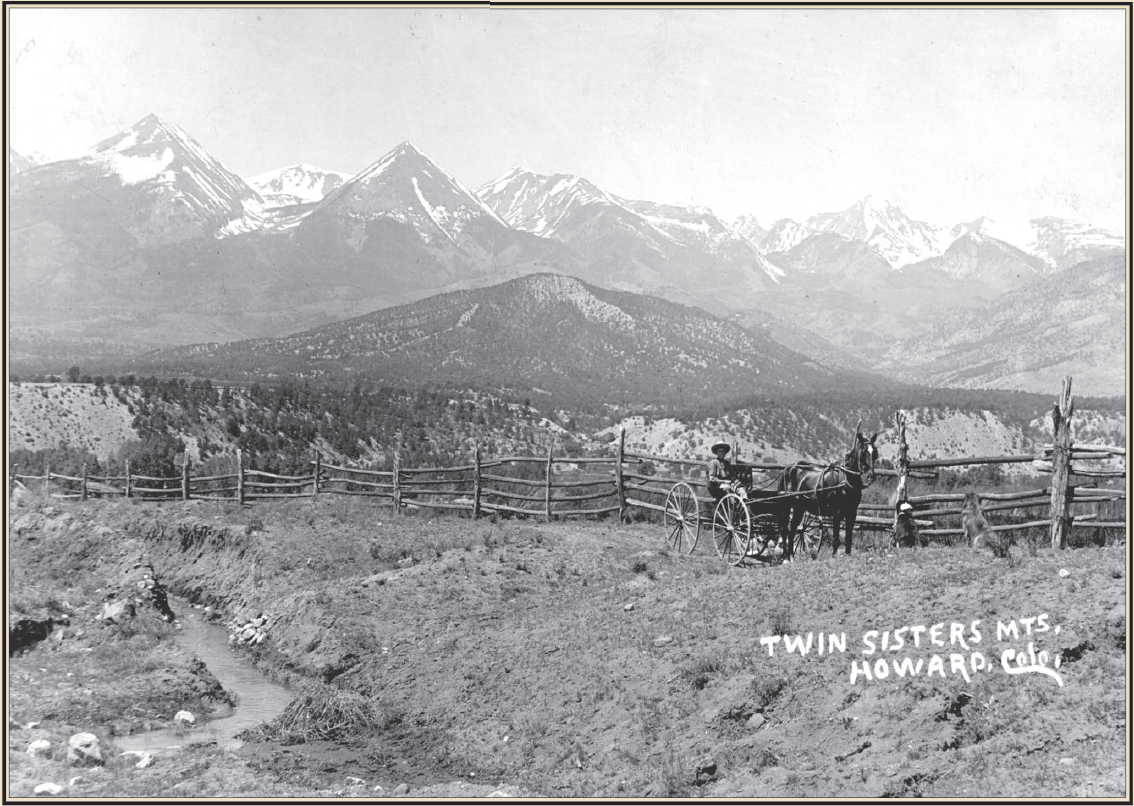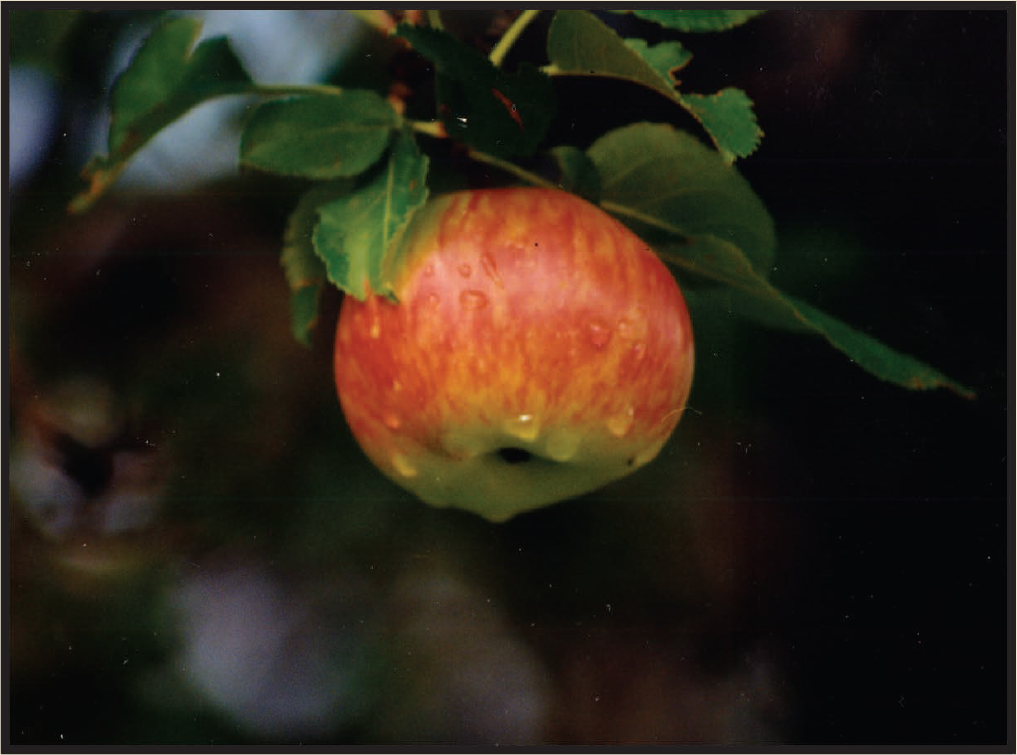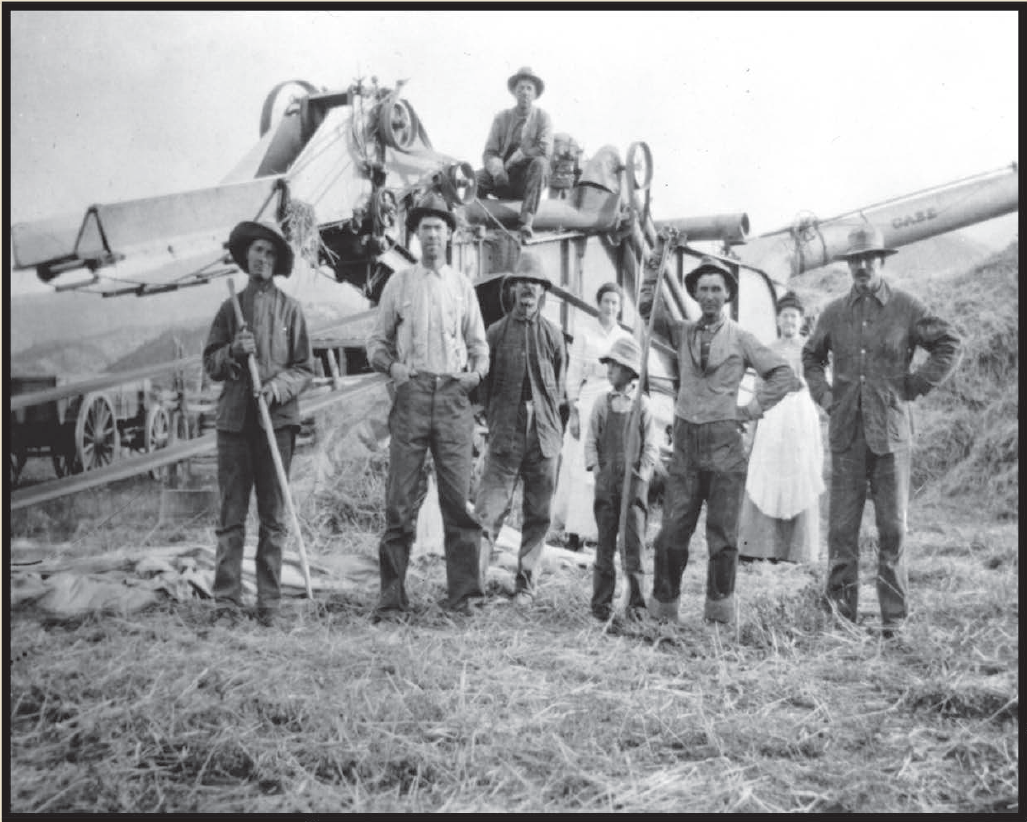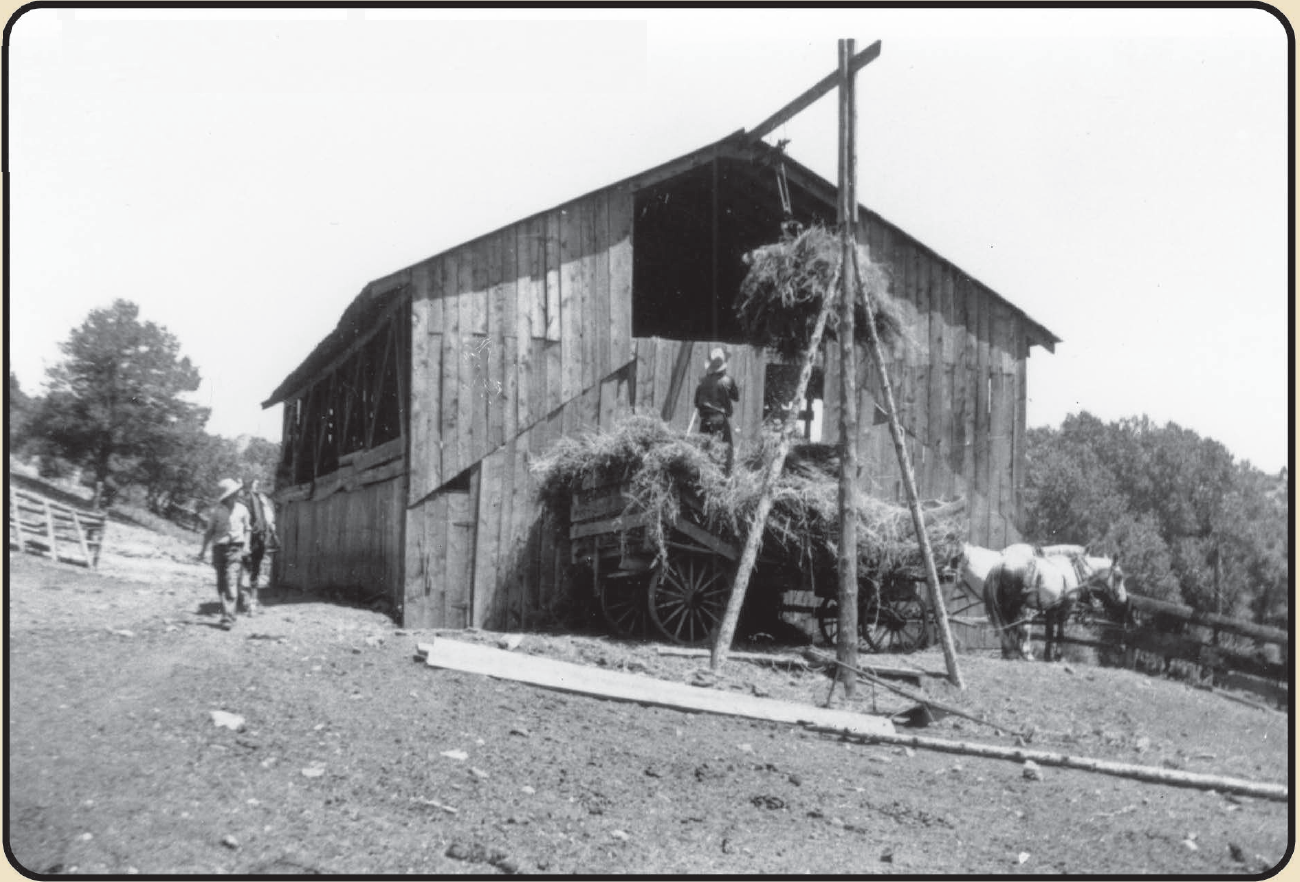Pathway into History
The Life of a Farmer
Pleasant Valley was settled by homesteading families and laborers.
Once land was claimed, many hands worked hard to make it productive.
The Homestead Acts
European immigrants, as well as poor U.S. citizens from the south and east, sought status and independence as landowners in Pleasant Valley. Three different Homestead Acts made this possible as settlers were encouraged to come west and claim undeveloped land. Many knew only a little English and had few personal belongings, but they possessed a rich heritage reflected in customs and religion.
Homesteading is Hard Work
Large families helped homesteaders accomplish the difficult chore of “improving” the land as required by the Homestead Acts. Improving land meant surveying, clearing and burning trees not used in construction, removing stumps and rocks, and leveling the land. Then soil was tilled, seeds planted, and pastures and fields irrigated
As years went by, inventions lessened the work of families. This technology eased the work of ranching and farming, but never eliminated it.
Farmers and ranchers often traded work and cooperated in raising animals. They shared equipment and ideas. Many worked part time in mines and other enterprises in order to have a higher standard of living.
Women’s Work
Pioneer life challenged even the strongest women. Daily chores required physical strength and stamina. Women carried buckets of water from the hand-dug well or spring to the house. Meals were prepared on a wood-fired range. Canning, drying, smoking, and salting foods for next winter’s use consumed a large amount of the women’s time as did rearing large families.
Water Worth More than Land
Having land was important, but having land with water was even better. The Pleasant Valley Ditch with water from the Arkansas River irrigated the homestead lands north of the river. Colorado water rights were, and continue to be, vital to agriculture. Without water, often called “white gold,” in the arid land of Pleasant Valley, nothing could grow enough to produce an income.
Royal Gorge Regional Museum and History Center photo, 1916
Click the image to the right for a full-sized version
Food for the Body
Apple trees grow well in the cooler temperatures of higher elevations, and most homesteaders planted fruit trees in small orchards for home use and for market. Many of these apple trees, some of which are over 100 years old, still produce some fruit. Table fresh fruits, cider, jellies, jams, pies, cobblers, sauce, and dried and canned fruits were highly prized. Cowboys and others deprived of fruit for long periods would rid long distances to obtain fresh applies. Other crops included potatoes, lettuce, peas, corn, and carrots.
Work Made Easier
Harvesting grain with a crew and thresher was hot, dusty work. The grain shocks in the field were gathered onto a wagon then hauled to the thresher. Each shock was fed into the thresher that separated the grain from the haff and straw. One threshing machine traveled from farm to farm while farmers cooperated to complete the work.
Jackson’s Fork lessened the work for farmers. Long, curved tongs speared hay from the wagon and lifted it up to the loft door. Horses and block and tackle pulled the fork across a roof track to the proper location where the farmer manually released the fork to drop the hay. Horses had to be taught to back up after the hay was released to be ready for the next forkful.



